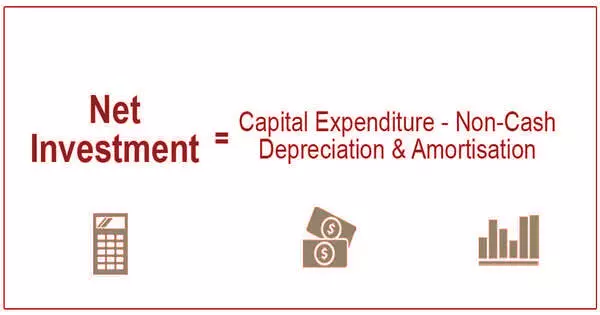Net investment is the total amount of money spent by a company on capital assets less the cost of depreciation. This figure represents the actual expenditure on durable goods such as plants, equipment, and software used in the company’s operations.
Net investment in economics refers to spending that increases the availability of fixed capital goods or means of production, as well as goods inventories. It is the total spending on newly produced physical capital (fixed investment) and inventories (inventory investment), minus replacement investment, which simply replaces depreciated capital goods (gross investment). It is the sum of productive capital formation and net additions to the stock of housing and inventories.
It is the difference between the total amount of money spent by a company on capital assets and the cost of depreciation on those assets. It indicates how much a company spends to maintain and improve its operations. A positive value indicates that business operations are leading to expansion. A negative value, on the other hand, indicates that the business operations are contracting.
Formula
The net investment value is calculated by subtracting depreciation expenses from gross capital expenditures (capex) over a period of time.
Net Investment = capital expenditures – depreciation
Explanation
Let’s take an example of a company that invests in machinery worth INR 10 lakhs with a life of 25 years and no residual value. If the firm follows a straight-line method of depreciation, then the value of depreciation is INR 40,000 per annum.
At the end of the first year, the net investment calculation is as follows:
Net Investment = 10,00,000-40,000 = INR 9,60,000
In the next year, if the firm invests in any of the fixed assets, then it will increase. Else, the firm’s net investment will be reduced by the depreciation of machinery.
Net investment is part of a country’s gross domestic product (GDP). The figure in a country’s GDP represents gross private domestic investment. It includes all real estate and inventory expenditures by private companies and governments. As a result, it is an early indicator of a country’s potential economic production capacity.
If gross investment exceeds depreciation on a consistent basis, net investment will be positive, indicating that the company’s productive capacity is increasing. Net investment will be negative if the gross investment is consistently lower than depreciation, indicating that productive capacity is declining. That could be a problem in the future. This is true for all entities, from small businesses to large national economies.
Net investment can also be compared to competitors in the industry. If a company’s net worth exceeds that of its competitors, it may indicate that the company has a greater potential for growth than its competitors. Furthermore, if a company reports a lower value than its competitors, it may face limited growth opportunities.
















